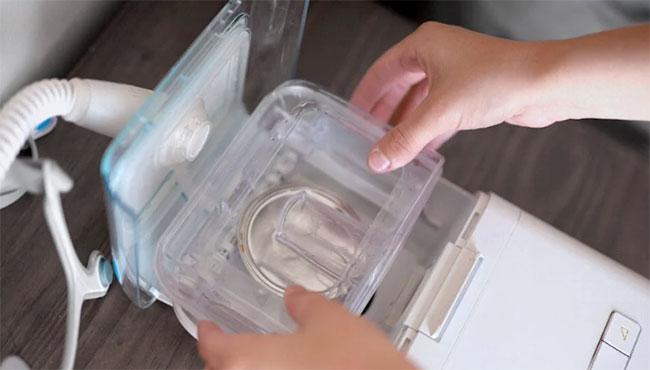The best way to clean your home CPAP
By Gavin | February 10, 2023
When a home CPAP is used for a long time, it needs regular cleaning to keep it clean and free from contamination. Cleaning your cpap properly can prevent bacteria from growing and spreading, ensuring you breathe cleaner air. We take a closer look at the best way to clean your cpap.
What are the dangers of leaving a home cpap uncleaned for long periods?
Respirators, pipelines, and masks are suitable for bacterial growth, such as E. coli, Staphylococcus aureus, and Candida albicans, due to the high temperature and humidity when they are in use. If not disinfected in time, many bacteria will enter the human respiratory tract with the airflow, posing a significant health risk to the user. This can lead to acute exacerbation of chronic obstructive pulmonary disease (COPD), which can lead to hospital admission, causing a significant health risk and financial burden to the patient.

What are the benefits of frequent cpap cleaning?
Reduce the risk of disease. If you don't clean your cpap mask and accessories promptly, they can easily harbor bacteria. For example, I often use a nasal pillow, which can quickly become infected with viruses and bacteria when I have a cold. Good hygiene is essential during cold and flu season.
Clean air. The lungs have to inhale well-filtered air from a respirator. According to an article by Professor Hu Bijie from the Department of Infectious Diseases of Shanghai Zhongshan Hospital in the SIFIC Forum, we don't want to inhale contaminated air into our lungs. Home caps are not sterilized, and the inhaled nebulized gas may cause fatal pneumonia! The article mentioned that the microbiological analysis and investigation showed bacterial contamination of the water in the nebulizer tank. Which had not been disinfected for 2 months, was at least 100 million bacteria per ml!
In the Infectious Diseases Department of Zhongshan Hospital in Shanghai, a patient with a lung infection from a southern province was admitted with an unusual chest CT presentation and response to treatment! The patient was on non-invasive mechanical ventilation because of severe myasthenia gravis. Still, the container of nebulized water had never been sterilized for almost 2 months. When observing the water in the nebulizer tank, it was surprising how much cotton wool-like material was floating around, and the seriousness of the problem was immediately apparent.
The container was sent to the microbiology laboratory for culture + smear!
In addition to the floating material, a thick layer of suspected biofilm was found at the bottom of the tank.
Negative antacid stain, but Gram stain revealed a large number of microorganisms
Therefore, We recommend 2 ways to clean the respirator air:
regularly clean and replace the filter
and periodically clear the respirator mask, pipeline, and humidifier.
How often to clean a home cpap
Mask: daily
Tubing: clean once a week; dry daily
Humidifier: clean once a week
Nasal mask and nasal pillow: clean daily
What cleaning products do I need for my home cpap?
1. Mild soap and water. Do not use harsh chemical soaps to avoid chemicals damaging the mask's silicone; mild soaps are harmless to your respirator.
2. Vinegar. Vinegar is a natural disinfectant that kills bacteria when cleaning the respirator tubing and humidifier. It also eliminates calcified deposits at the bottom of your humidifier.
3. Towel. When cleaning the cpap, you can use towels or CPAP mask wipes to help clean and remove cpap equipment deposits.
In addition, patients who can do so can ask a professional to cryo-sterilize the breathing line once a month to kill the viral bacteria completely.
Respiratory Help reminds you that home CPAP is generally intended for single-person use. If you need to change patients, you must sterilize the tubing and mask to avoid cross-infection. Please check the user manual carefully before you start cleaning, and do not clean the cpap after it has been plugged in to prevent electric shock.